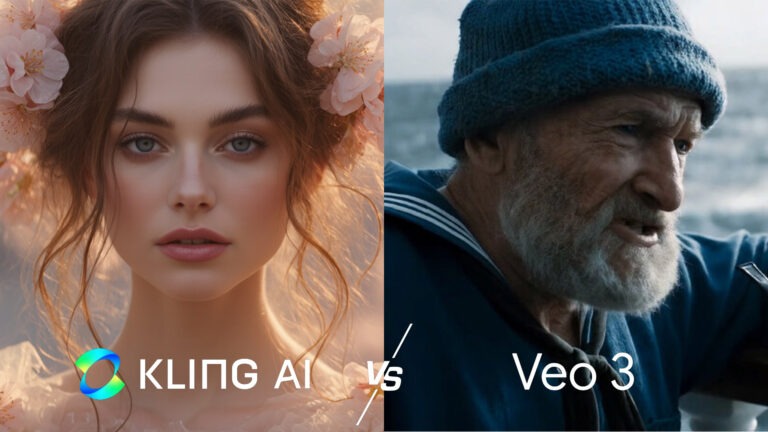Let’s learn…
In a digital landscape where the average person encounters between 4,000 to 10,000 ads daily, breaking through the noise isn’t just challenging—it’s nearly impossible without brilliant content marketing examples. As marketing leaders, we’re constantly searching for that perfect blend of creativity, strategy, and execution that transforms casual browsers into loyal customers. I’ve spent years analyzing what makes certain campaigns soar while others fade into obscurity, and today, I’m sharing the gems that continue to influence my own approach to content.
The following five content marketing examples aren’t just visually appealing or temporarily viral—they’re masterclasses in understanding audience needs, creating genuine value, and building lasting brand relationships. Whether you’re managing content strategy for a Fortune 500 company or leading marketing for a promising startup, these campaigns offer valuable lessons that transcend industry boundaries.

1. Mailchimp’s “What’s in a Name?” Campaign
When people kept mispronouncing “Mailchimp” (as “MailKimp”) in the popular Serial podcast sponsorship, most brands would have winced and moved on. Mailchimp did the opposite—they leaned in hard.
Their “Did You Mean…?” campaign embraced and amplified this mispronunciation by creating an entire ecosystem of quirky microsites with sound-alike names like “MailShrimp,” “KaleLimp,” and “FailChips.” Each site featured bizarre, entertaining short films and interactive experiences that captured the brand’s playful personality.
Why it worked:
- Transformed weakness into strength: Rather than correcting their audience, they celebrated the confusion
- Created shareability: The weird, wonderful microsites begged to be shared
- Maintained brand consistency: Despite the varied executions, the whimsical tone remained uniquely Mailchimp
Results: The campaign generated over 67 million organic impressions and won the Cyber Grand Prix at Cannes Lions. Beyond metrics, it solidified Mailchimp’s identity as a brand unafraid to be quirky and authentic.
Key takeaway for CMOs: Don’t be afraid to embrace imperfection. Sometimes your brand’s quirks can become your strongest differentiators when you own them completely.

2. HubSpot’s Comprehensive Resource Library
HubSpot doesn’t just talk about inbound marketing—they exemplify it through their massive library of free resources. Their content hub includes:
- Detailed blog posts covering every marketing topic imaginable
- Free tools (Website Grader, Email Signature Generator)
- Comprehensive certification courses
- Downloadable templates and guides
- Original research reports
Why it works:
- Demonstrates expertise: HubSpot proves they understand marketing by creating genuinely useful content
- Addresses every stage of the funnel: From awareness (blog posts) to consideration (tools) to decision (case studies)
- Creates a content flywheel: Each piece drives traffic to other resources
Results: HubSpot’s content strategy has helped them grow from a small startup to a public company valued at billions. Their blog alone attracts over 7 million monthly visits and has become an industry standard resource.
Key takeaway for marketing leaders: The most effective content marketing doesn’t feel like marketing at all—it feels like a valuable service your audience would happily pay for, but you’re offering it free.

3. Spotify’s Annual “Wrapped” Campaign
Each December, Spotify transforms user data into personalized year-in-review stories that showcase listening habits in visually appealing, shareable formats. Users discover their top artists, songs, genres, and listening patterns, packaged as an interactive journey.
Why it works:
- Personalization at scale: Each user receives content uniquely relevant to them
- Emotional connection: Music consumption is deeply personal and nostalgic
- Built-in virality: The shareable format encourages users to post their Wrapped stories across social platforms
- Timing: The year-end release capitalizes on natural reflection and cultural conversation
Results: In 2022, Spotify Wrapped generated over 60 million shares on social media platforms. During Wrapped season, Spotify app downloads typically increase by 21% and premium subscriptions see a measurable spike.
| Year | Social Shares (Millions) | App Download Increase |
|---|---|---|
| 2020 | 40 | 15% |
| 2021 | 50 | 18% |
| 2022 | 60 | 21% |
Key takeaway for VPs of Marketing: Look for opportunities to transform your data into personalized content experiences. When users see themselves in your content, they’re far more likely to share it.

4. Blendtec’s “Will It Blend?” Video Series
Sometimes the most brilliant content marketing comes from highlighting your product’s capabilities in unexpected ways. Blendtec, a blender manufacturer, created a simple yet captivating YouTube series showing their CEO blending unconventional items—from iPhones to glow sticks to marbles.
Why it works:
- Unexpected demonstration: Shows product strength in memorable, entertaining ways
- Consistent format: The predictable structure (same host, same question) made it instantly recognizable
- Product-centered content: Despite being entertaining, the product remains the undisputed star
- Scalable concept: The format allowed for continuous content creation as new blend-worthy items emerged
Results: The campaign increased Blendtec’s retail sales by 700%. Their YouTube channel has accumulated over 290 million views, transforming a relatively unknown B2B blender company into a consumer household name.
Key takeaway for marketing professionals: Don’t overthink it. Sometimes the most effective content marketing simply showcases what your product does best—just in a way nobody expected.

5. American Express’s OPEN Forum
American Express realized small business owners—their key customer segment—needed more than financial services; they needed knowledge and community. Their response was OPEN Forum, a content platform providing small business owners with actionable advice, industry insights, and connection opportunities.
Why it works:
- Serves a genuine need: Addresses real challenges faced by their target audience
- Community building: Creates relationships between AmEx and users, but also between users themselves
- Authority positioning: Establishes AmEx as more than a service provider—they’re a valuable business partner
- Subtle brand integration: Focuses primarily on value rather than promotion
Results: OPEN Forum consistently ranks as one of American Express’s most effective customer acquisition channels. The platform attracts over 1 million monthly visitors, most of whom are exactly the small business decision-makers AmEx wants to reach.
Key takeaway for Chief Marketing Officers: Look beyond your product’s direct features and benefits. The most powerful content marketing often addresses your audience’s broader ecosystem of needs and challenges.
How Can Small Businesses Replicate These Content Marketing Examples?
You might be thinking, “Sure, these are great examples, but my business doesn’t have Spotify’s data or American Express’s budget.” The good news is that brilliant content marketing isn’t about resources—it’s about resourcefulness.
Here’s how smaller organizations can apply these same principles:
- Start with genuine audience insight: Before creating content, deeply understand what problems your audience needs solved.
- Play to your strengths: Blendtec didn’t try to create glossy lifestyle content; they showed off what their product could uniquely do.
- Create systems, not just pieces: HubSpot’s content works because it’s systematic and comprehensive, not because of any single blog post.
- Find your differentiator: What perspective, data, or approach can only your brand provide?
- Prioritize quality over quantity: Better to create one remarkable piece monthly than daily forgettable content.
Measuring Content Marketing Success
How do you know if your content marketing efforts are actually working? The most successful brands focus on metrics aligned with business objectives:
Traffic metrics help understand reach:
- Unique visitors
- Page views
- Traffic sources
Engagement metrics reveal content quality:
- Time on page
- Bounce rate
- Social shares
Conversion metrics connect to business impact:
- Lead generation
- Email sign-ups
- Direct sales
Brand metrics measure longer-term effects:
- Brand recall
- Search volume for brand terms
- Customer sentiment
The most effective measurement approaches tie these metrics to specific business goals rather than tracking them in isolation.
What Types of Content Work Best in Marketing?
While the examples above span various formats, certain content types consistently deliver results across industries:
Original research and data establishes authority and generates backlinks. Companies like HubSpot and Content Marketing Institute regularly publish industry benchmarks that become essential references.
Interactive tools provide immediate value while showcasing expertise. HubSpot’s Website Grader and CoSchedule’s Headline Analyzer are perfect examples of utility-driven content.
Expert guides and resources answer specific questions comprehensively. Moz’s Beginner’s Guide to SEO has been driving conversions for years by thoroughly addressing a complex topic.
Behind-the-scenes content creates authentic connections. Patagonia’s Footprint Chronicles, revealing their supply chain, builds trust through transparency.
User-generated content leverages your community while providing social proof. GoPro’s entire content strategy revolves around showcasing what customers create with their products.
What have we learned?
The brilliance of these content marketing examples isn’t just in their creativity—it’s in how strategically they align business objectives with audience needs. Mailchimp turned brand recognition challenges into a strength. HubSpot built an empire by freely sharing their expertise. Spotify transformed usage data into emotional experiences. Blendtec demonstrated product benefits through entertainment. American Express solved real problems for their target customers.
As you develop your own content marketing strategy, remember that the most effective campaigns don’t just capture attention—they create genuine value. They don’t interrupt; they integrate. They don’t just sell; they serve.
What content marketing examples have inspired your approach? I’d love to hear which campaigns have influenced your strategy. Share your thoughts in the comments below or connect with me directly to continue the conversation.
How can we help?
JZ Creates stands at the intersection of creativity and data-driven strategy, helping brands elevate their content marketing to new heights. Unlike traditional agencies, JZ Creates leverages cutting-edge AI tools alongside human creativity to develop campaigns that don’t just capture attention—they drive measurable results.
Their team of content strategists, designers, and analytics experts work collaboratively to identify your brand’s unique content opportunities, develop distinctive brand voices that resonate with target audiences, and create scalable content systems rather than one-off pieces. Whether you’re looking to build a HubSpot-style resource library, develop a viral campaign like Mailchimp’s, or create data-driven personalized experiences similar to Spotify Wrapped, JZ Creates brings both the strategic vision and technical execution needed to transform your content marketing from a cost center to a revenue generator. Their process begins with deep audience insights and ends with comprehensive performance analytics, ensuring every piece of content serves your broader business objectives.




